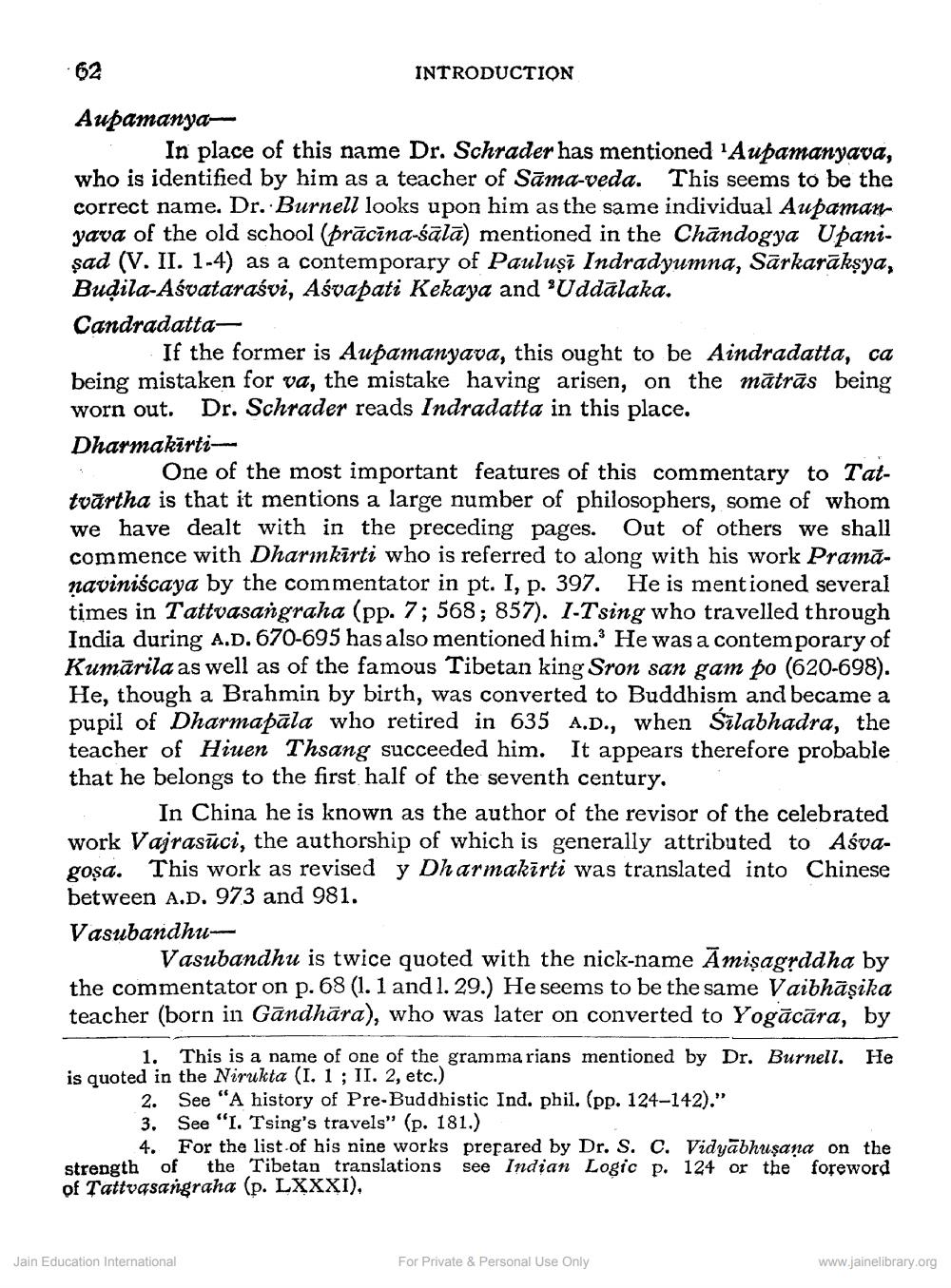________________
-62
INTRODUCTION
Aupamanya,
In place of this name Dr. Schrader has mentioned Aupamanyava, who is identified by him as a teacher of Sāma-veda. This seems to be the correct name. Dr. Burnell looks upon him as the same individual Aupaman yava of the old school (prācina-śālā) mentioned in the Chăndogya Upani. şad (V. II. 1.4) as a contemporary of Pauluşī Indradyumna, Sārkarāksya, Budila-Aśvataraśvi, Aśvapati Kekaya and 'Uddalaka. Candradatta
If the former is Aupamanyava, this ought to be Aindradatta, ca being mistaken for va, the mistake having arisen, on the mātrās being worn out. Dr. Schrader reads Indradatta in this place. Dharmakirti
One of the most important features of this commentary to Tattvārtha is that it mentions a large number of philosophers, some of whom we have dealt with in the preceding pages. Out of others we shall commence with Dharınkirti who is referred to along with his work Pramănaviniscaya by the commentator in pt. I, p. 397. He is mentioned several times in Tattvasangraha (pp. 7; 568; 857). 1-T sing who travelled through India during A.D. 670-695 has also mentioned him. He was a contemporary of Kumārila as well as of the famous Tibetan king Sron san gam po (620-698). He, though a Brahmin by birth, was converted to Buddhism and became a pupil of Dharmapāla who retired in 635 A.D., when Silabhadra, the teacher of Hiuen Thsang succeeded him. It appears therefore probable that he belongs to the first half of the seventh century.
In China he is known as the author of the revisor of the celebrated work Vajrasuci, the authorship of which is generally attributed to Aśvagoșa. This work as revised y Dharmakārti was translated into Chinese between A.D. 973 and 981. Vasubandhu
Vasubandhu is twice quoted with the nick-name Amişagrddha by the commentator on p. 68 (1.1 and 1. 29.) He seems to be the same Vaibhāşika teacher (born in Gāndhāra), who was later on converted to Yogācāra, by
1. This is a name of one of the grammarians mentioned by Dr. Burnell. He is quoted in the Nirukta (I. 1 ; II. 2, etc.)
2. See "A history of Pre-Buddhistic Ind. phil. (pp. 124-142)." 3. See "1. Tsing's travels" (p. 181.)
4. For the list of his nine works prepared by Dr. S. C. Vidyabhuşana on the strength of the Tibetan translations see Indian Logic p. 124 or the foreword of Tattvasangraha (p. LXXXI),
Jain Education International
For Private & Personal Use Only
www.jainelibrary.org




